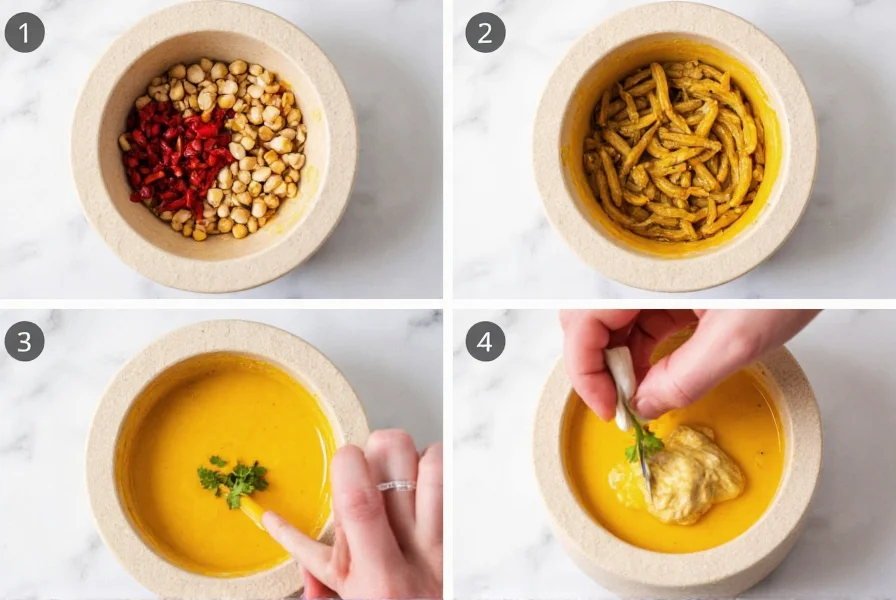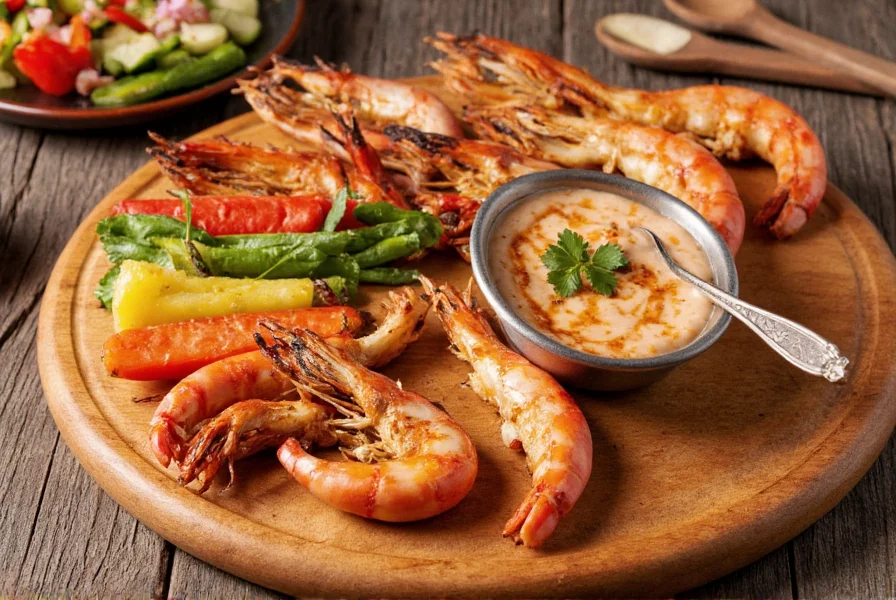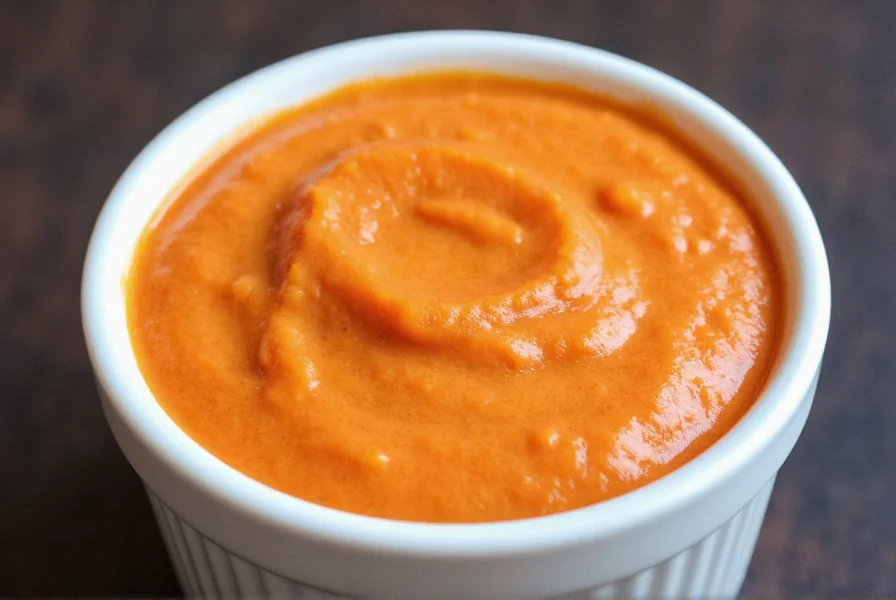Understanding what makes exceptional chili aioli starts with recognizing its foundation: authentic aioli is an emulsion of garlic and olive oil, not merely flavored mayonnaise as many commercial versions suggest. The addition of chili transforms this classic Mediterranean sauce into a dynamic condiment with depth and complexity that enhances numerous dishes.
The Essential Components of Perfect Chili Aioli
Authentic chili aioli requires just a handful of quality ingredients, each playing a critical role in the final flavor profile. Unlike store-bought versions that often rely on preservatives and artificial flavors, homemade chili aioli showcases fresh, vibrant tastes that can be precisely adjusted to your preference.
| Core Ingredient | Purpose | Quality Tips |
|---|---|---|
| Fresh garlic | Provides the foundational flavor | Use young, plump cloves; avoid sprouted garlic |
| Extra virgin olive oil | Creates the emulsion base | Choose a mild, fruity variety for best results |
| Chili component | Adds heat and complexity | Fresh red chilies for brightness, chipotle for smokiness |
| Lemon juice | Balances richness and stabilizes emulsion | Freshly squeezed only |
| Egg yolk (optional) | Helps emulsification | Use pasteurized if concerned about raw eggs |
Traditional Preparation Method
While many modern recipes shortcut the process by starting with mayonnaise, authentic aioli requires patience and technique. The traditional mortar-and-pestle method releases garlic's essential oils more effectively than chopping, creating a smoother, more integrated flavor.
Begin by crushing 2-3 garlic cloves with a pinch of salt into a smooth paste. Gradually incorporate 1 cup of extra virgin olive oil, drop by drop at first, whisking constantly until the emulsion forms. This slow addition prevents breaking. Once stable, blend in your chosen chili element—whether fresh minced red chili, chipotle in adobo, or cayenne pepper—to achieve your desired heat level.

Popular Variations for Different Heat Preferences
Chili aioli adapts beautifully to various heat levels and flavor profiles. For a subtle warmth, incorporate roasted red peppers with just a hint of cayenne. Those preferring serious heat might add minced habanero or serrano peppers. Smoked paprika creates a chipotle-style aioli without overwhelming spice, perfect for those sensitive to intense heat.
Consider these popular variations when making your homemade chili aioli recipe:
- Chipotle chili aioli: Adds smoky depth ideal for southwestern dishes
- Harissa-infused aioli: North African twist with complex spice notes
- Sriracha aioli: Convenient option using the popular sauce
- Ghost pepper aioli: For extreme heat enthusiasts (use sparingly!)
Perfect Pairings: What Foods Complement Chili Aioli Best
Understanding what foods pair well with chili aioli transforms ordinary meals into extraordinary experiences. This versatile sauce shines with seafood, particularly grilled shrimp, fish tacos, and crab cakes. Its creamy heat cuts through richness while enhancing delicate flavors.
For land-based dishes, chili aioli elevates:
- Burgers and sandwiches as a flavorful alternative to traditional spreads
- Roasted or grilled vegetables, especially sweet potatoes and asparagus
- Fresh spring rolls or vegetable tempura
- As a dipping sauce for french fries or sweet potato fries
- With grilled chicken or pork for added dimension

Storage and Shelf Life Considerations
Proper storage ensures your homemade chili aioli maintains both safety and quality. When stored in an airtight container in the refrigerator, fresh chili aioli typically lasts 3-5 days. The garlic flavor intensifies over time, so you may want to adjust your initial seasoning accordingly.
Never leave chili aioli at room temperature for more than two hours. The combination of garlic, oil, and potential egg creates conditions where bacteria could grow. For longer storage, consider making smaller batches or freezing in ice cube trays for future use.
Troubleshooting Common Issues
Even experienced cooks encounter challenges when making aioli. If your emulsion breaks, don't discard it—fix it by starting a new small emulsion with a teaspoon of water or lemon juice, then slowly incorporating the broken mixture. For overly spicy aioli, balance with additional olive oil or a touch of honey.
Remember that the heat level of chili aioli will intensify slightly as it rests, so err on the side of caution when adding spicy elements. You can always add more heat, but you can't remove it once incorporated.
Frequently Asked Questions
What's the difference between chili aioli and regular aioli?
Regular aioli is a traditional garlic and olive oil emulsion, while chili aioli incorporates chili peppers or chili-based ingredients to add heat and complexity. Authentic aioli doesn't contain mayonnaise, though many commercial versions do, which affects both texture and flavor profile.
Can I make chili aioli without raw eggs?
Yes, traditional aioli doesn't require eggs at all—it's simply garlic emulsified with olive oil. Many modern recipes include egg yolk as an emulsifier, but you can achieve excellent results using just garlic, olive oil, lemon juice, and your chosen chili element without any egg products.
How can I adjust the heat level in chili aioli?
Control heat by adjusting both the type and amount of chili used. For milder versions, use roasted red peppers with a pinch of cayenne. For medium heat, try chipotle peppers in adobo. For intense heat, incorporate fresh serrano or habanero peppers. Remember that heat intensifies over time, so make your initial batch slightly milder than desired.
What are the best store-bought alternatives if I can't make homemade chili aioli?
Look for products labeled "aioli" rather than "flavored mayonnaise" for closer approximation to authentic texture and flavor. Check ingredients for real garlic and olive oil as primary components. Many specialty food brands offer quality options, but always read labels carefully as "aioli" is often just marketing for garlic-flavored mayo.
Why does my homemade chili aioli separate?
Separation occurs when the emulsion breaks, usually from adding oil too quickly or temperature extremes. To prevent this, add oil very slowly at first while whisking constantly, and ensure all ingredients are at room temperature. If separation happens, start a new small emulsion and gradually incorporate the broken mixture.











 浙公网安备
33010002000092号
浙公网安备
33010002000092号 浙B2-20120091-4
浙B2-20120091-4